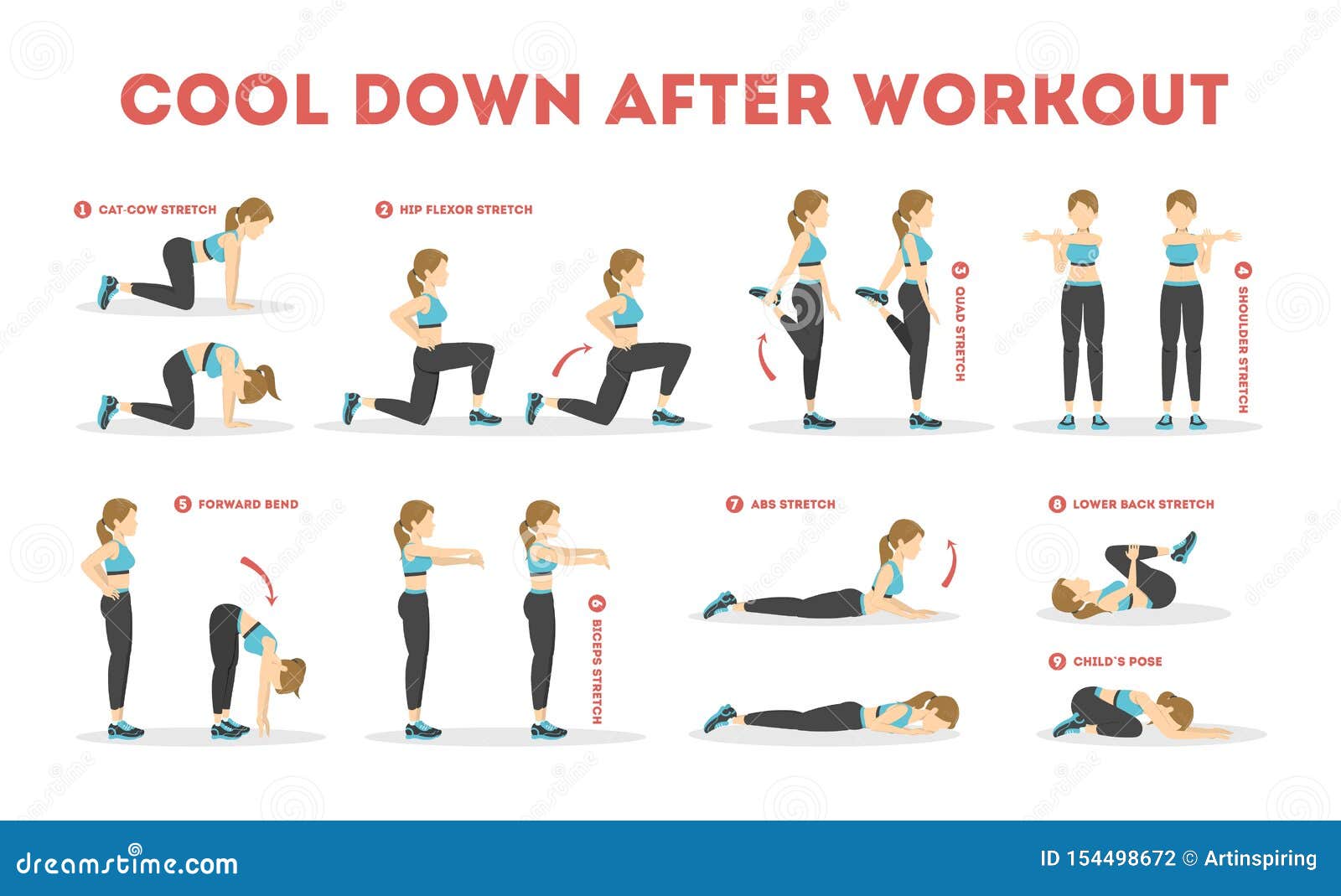The Importance of Cooling Down: Why It’s Essential
A proper cool-down routine is a vital aspect of any workout regimen, as it promotes the gradual reduction of heart rate and blood pressure, while also alleviating muscle tension and soreness. By incorporating a cool-down routine into your post-workout regimen, you can enhance overall recovery, improve flexibility, and reduce the risk of injury. This is a key component of how to cool down after a workout effectively.
Stretching for Relaxation: Post-Workout Flexibility
An essential part of cooling down after a workout involves stretching exercises that target major muscle groups. These exercises can help alleviate muscle tension, improve flexibility, and reduce the risk of injury. Some effective stretches include the seated forward bend, cobra pose, and reclined spinal twist. Visual aids or illustrations can provide a better understanding of the correct posture and execution of these stretches.
Gradual Transition: The Benefits of Walking
Walking for a few minutes after a workout can help the body gradually return to its normal state, reducing the risk of injury and promoting overall recovery. This low-impact activity allows the heart rate to slowly decrease, while also aiding in the removal of lactic acid buildup in the muscles. By incorporating a short walk into your cool-down routine, you can enhance your post-workout experience and support your body’s natural recovery process.
Hydration and Nutrition: Fueling Your Body for Recovery
Proper hydration and nutrition play a crucial role in post-workout recovery. It is essential to replenish fluids lost during exercise to help regulate body temperature, transport nutrients, and maintain overall bodily functions. Additionally, consuming protein-rich foods can aid in muscle repair and recovery. A balanced post-workout meal or snack, including a mix of carbohydrates, proteins, and healthy fats, can help optimize your cool-down routine and support your fitness goals.
Mindful Breathing: Relaxation Techniques for Post-Workout
Incorporating mindful breathing techniques into your cool-down routine can help promote relaxation and rejuvenation after a workout. Deep breathing exercises, progressive muscle relaxation, and guided imagery are all effective methods for reducing stress, lowering heart rate, and alleviating muscle tension. By focusing on your breath and engaging in these practices, you can enhance your post-workout experience and support your body’s natural recovery process.
Temperature Therapy: Hot and Cold Contrast Showers
Temperature therapy, specifically hot and cold contrast showers, can be an effective method for promoting recovery and reducing muscle soreness after a workout. Alternating between hot and cold water can help improve circulation, reduce inflammation, and alleviate muscle tension. This invigorating post-workout practice can leave you feeling refreshed, rejuvenated, and ready to tackle your next fitness challenge.
Rest and Recharge: The Final Step in Your Cool-Down Routine
After a strenuous workout, it is crucial to prioritize rest and recovery to reap the full benefits of your exercise routine and promote overall fitness and well-being. The final step in your post-workout cool-down routine should involve adequate rest and rejuvenation. This includes getting enough sleep and taking rest days when necessary.
Sleep plays a vital role in muscle recovery and growth. During sleep, your body produces hormones that facilitate muscle repair and tissue growth, allowing you to wake up feeling refreshed and rejuvenated. Aim for 7-9 hours of quality sleep each night to optimize your body’s natural recovery processes. Additionally, consider establishing a consistent sleep schedule and creating a relaxing bedtime routine to promote better sleep quality.
Rest days are equally important in preventing overtraining and reducing the risk of injury. Over time, continuous exercise without proper rest can lead to mental and physical burnout, impairing your performance and overall well-being. Schedule regular rest days into your workout plan, allowing your body and mind to recover and recharge. During these rest days, engage in light activities such as walking, stretching, or yoga to maintain flexibility and mobility without overexerting yourself.
Incorporating adequate rest and recovery into your cool-down routine is essential for long-term fitness success. By prioritizing sleep and taking rest days, you can enhance your performance, reduce the risk of injury, and promote overall well-being. Remember, the key to a successful workout regimen is not only pushing your limits during exercise but also allowing your body to recover and rejuvenate afterwards.







